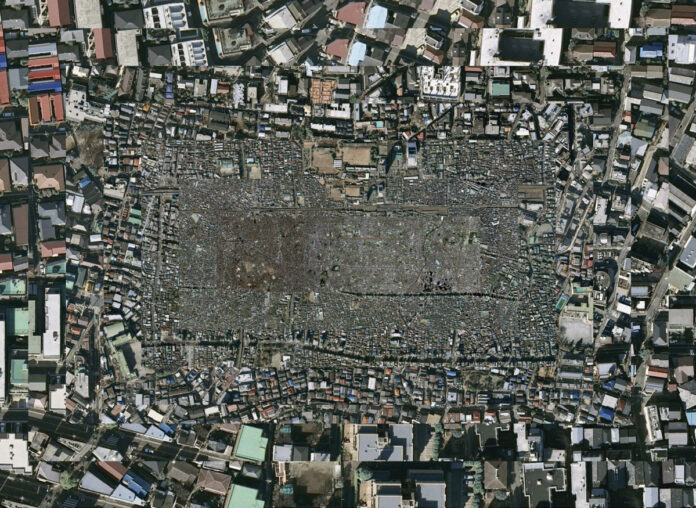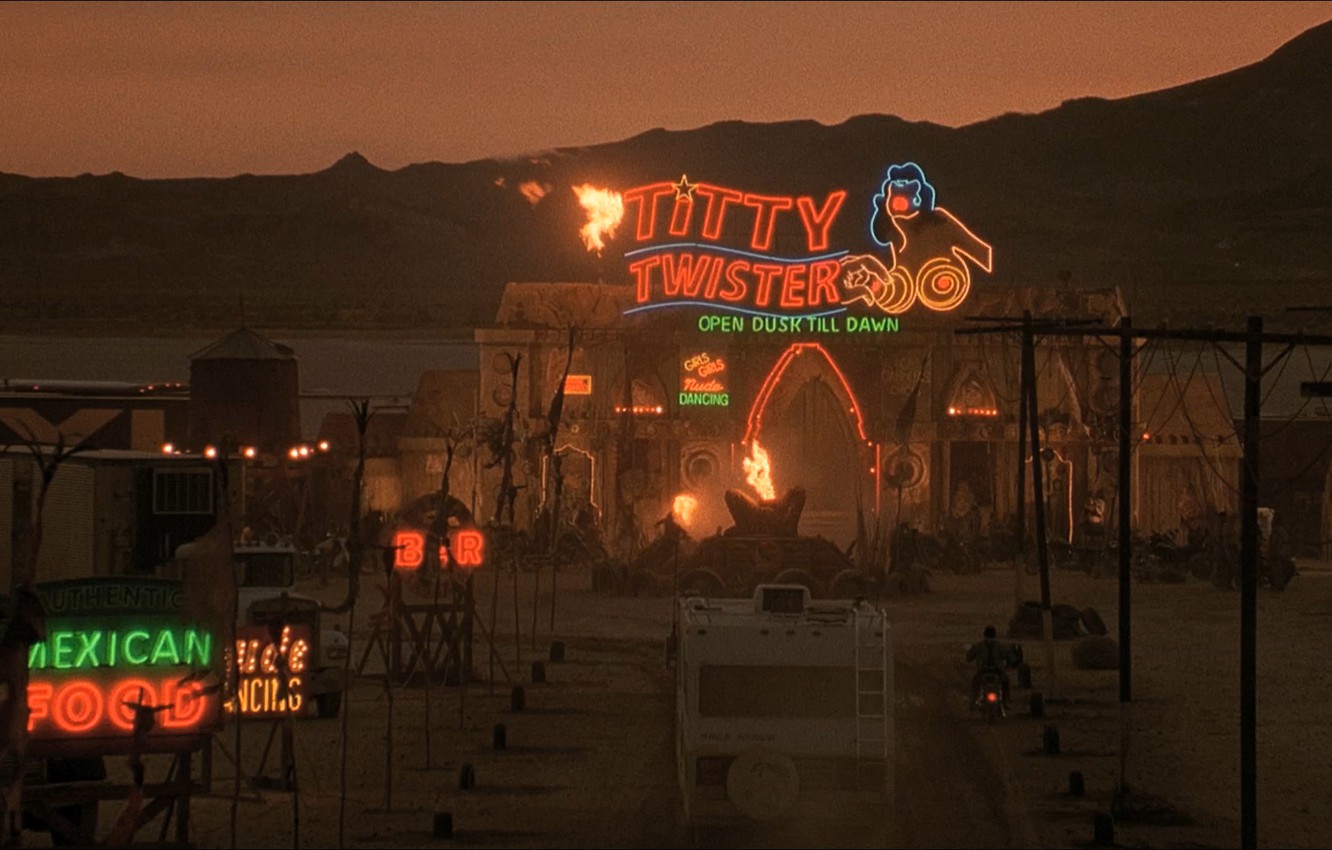👋 Hoi, Ed & Chris hier. In de Atlas van het Lange Nu duiden we onze snel veranderende wereld. We doen dit met de historisch-futuristische bril van de langetermijndenker en de gereedschapskist van de speculatieve maker. Het hier en nu is een moment dat eeuwen beslaat.
In deze editie gaan we terug naar het begin. Althans, terug naar ons begin, naar het eerste project dat wij, Edwin & Christiaan, ondernamen en waaruit ons denken, ons onderzoek en uiteindelijk onze futurologische studio is ontsproten: ons bezoek aan Tokio.
We gingen in 02012 naar Tokio omdat we wilden onderzoeken wat ‘groei’ is. Groei zagen we als de continu uitdijende en expansieve groei van steeds meer mensen, met steeds spullen, in steeds grotere steden, met steeds meer verifieerbare kennis. Groei als vooruitgang, verbetering en persoonlijke ontwikkeling. Wij dachten, laten we naar de grootste stad ter wereld gaan, zodat we kunnen ervaren hoe groei voelt, kunnen onderzoeken wat het is, en misschien aanwijzingen kunnen vinden over wat erna zou kunnen komen. Want eindeloze expansieve groei is uiteraard niet mogelijk op een eindige planeet.
Japan was interessant: het land was snel aan het vergrijzen en krimpen en de economische groei schommelde al sinds de bubbeleconomie in de jaren 90 was geknapt zo rond de 0%. Met andere woorden, groei werkte niet meer.
Dus ook al was Tokio de grootste en meest complexe opeenhoping van mensen op de planeet, het groeide ook niet spectaculair meer. Het was in onze ogen een ‘Still City’, noch groeiend, noch krimpend, misschien bevond het zich wel in een soort metabolisch equilibrium. Wij dachten toen dat het een voorbode zou kunnen zijn van hoe een degrowth, post-growth of steady-state samenleving zou kunnen werken.
We besloten om samen met een eclectische groep kunstenaars, ontwerpers en wetenschappers de stad vanuit deze premisses te gaan onderzoeken in een workshop en de uitkomsten te publiceren in een subjectieve stadsgids, Tokyo Totem, die in 02015 uitkwam.
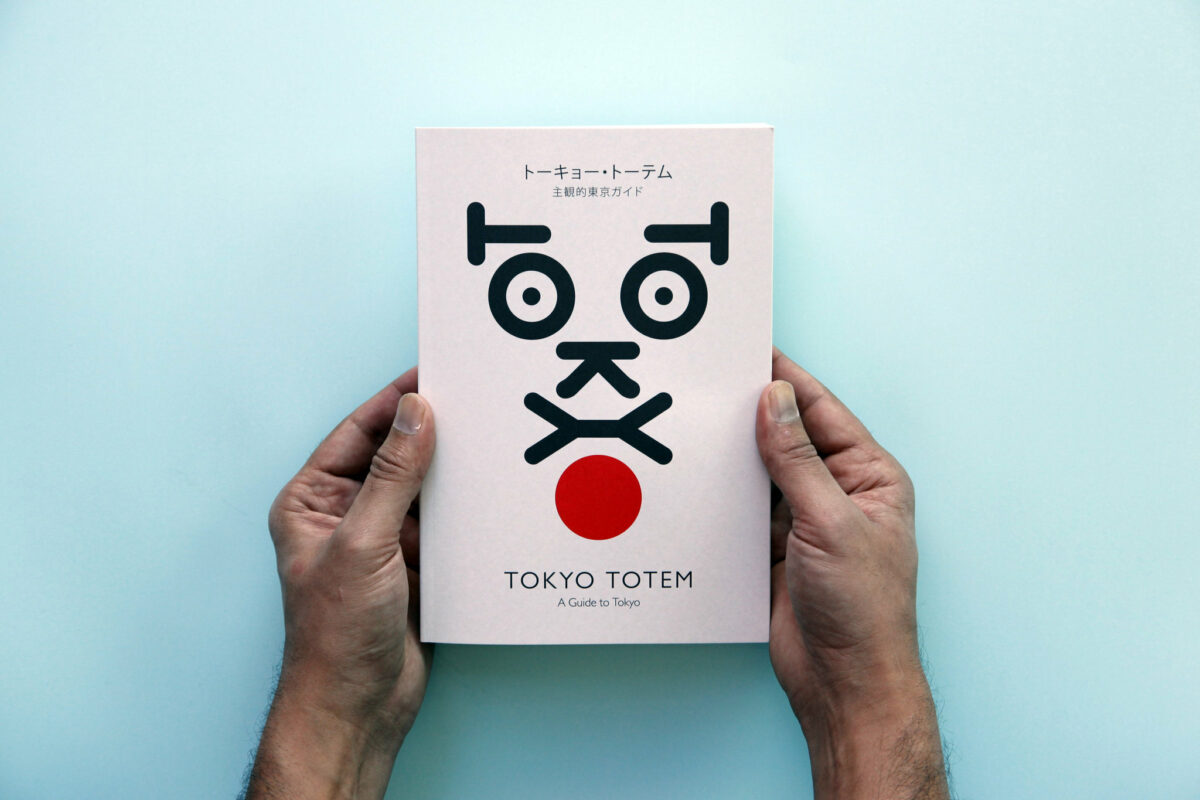
Ons Tokio-avontuur gaf uiteraard geen direct en duidelijk antwoord op onze nogal grote vraag. Wat het wel deed, is het zaadje planten van ons World Tree Model, het historisch-futuristische denkraam waarmee we het lange nu duiden en toekomstscenario’s maken.
Het bracht ons namelijk op het spoor van de onderschatte rol die de Romantiek in de Westerse cultuur heeft. In het Westerse vooruitgangsverhaal ligt namelijk vaak het accent op de vruchten van de Verlichting: objectiviteit, rationaliteit en de wetenschappelijke methode. Terwijl de intellectuele en kunstzinnige stroming van de Romantiek een minstens zo grote rol speelt in de Westerse cultuur, en de laatste decennia steeds dominanter wordt (Zie ook ons schrijven over de opkomst van de Homo Romanticus).
Tokyo Totem opent met een essay dat een inkijkje geeft in de oorsprong van het historisch-futuristische gesprek die wij nu al een decennium met elkaar hebben. Dat essay delen we vandaag met jullie. Enjoy!
The Noble Art of Subjective Exploration
By Christiaan Fruneaux
An interesting episode unfolded the first time I visited Tokyo, in July 2012. We were preparing the Still City workshop, whose outcome would form the basis of this guide. We had two and sometimes three meetings a day with people we hoped would join the workshop, or who could tell us something about their city. We were zigzagging through Tokyo, going in and out of subways, trying to navigate a unique address system that doesn’t use street names. We spent our days meeting people, sitting in coffee shops trying to connect to the Internet, and traveling in subterranean metro cars. After two weeks, Tokyo weighed heavy on me. I didn’t know why, but I felt claustrophobic. Trapped. Lost inside a seemingly endless, perfectly organized city.
I felt the need to confirm that Tokyo was not all that there was. I persuaded my fellow Monnik companions to join me in my search for a physical end to the city. We took the Chuo line westwards to Takao station, an hour by JR-train from Nakano, where we were staying with a friend. From the train-car window, the vast cityscape flowed unremittingly past. When we arrived in Takao we walked north for 20 minutes, towards a green rise on the horizon, and found a fence, demarcating the end of the city. This fence stood at the foot of a hill. On one side of the fence was Tokyo; on the other side, a forest. It was the end of the city. I felt relieved. Behind a small opening in the fence we found an old stone stairway that led to an abandoned Shinto shrine. It was raining, and through the leaves you could see the Metropolis, not so endless after all.
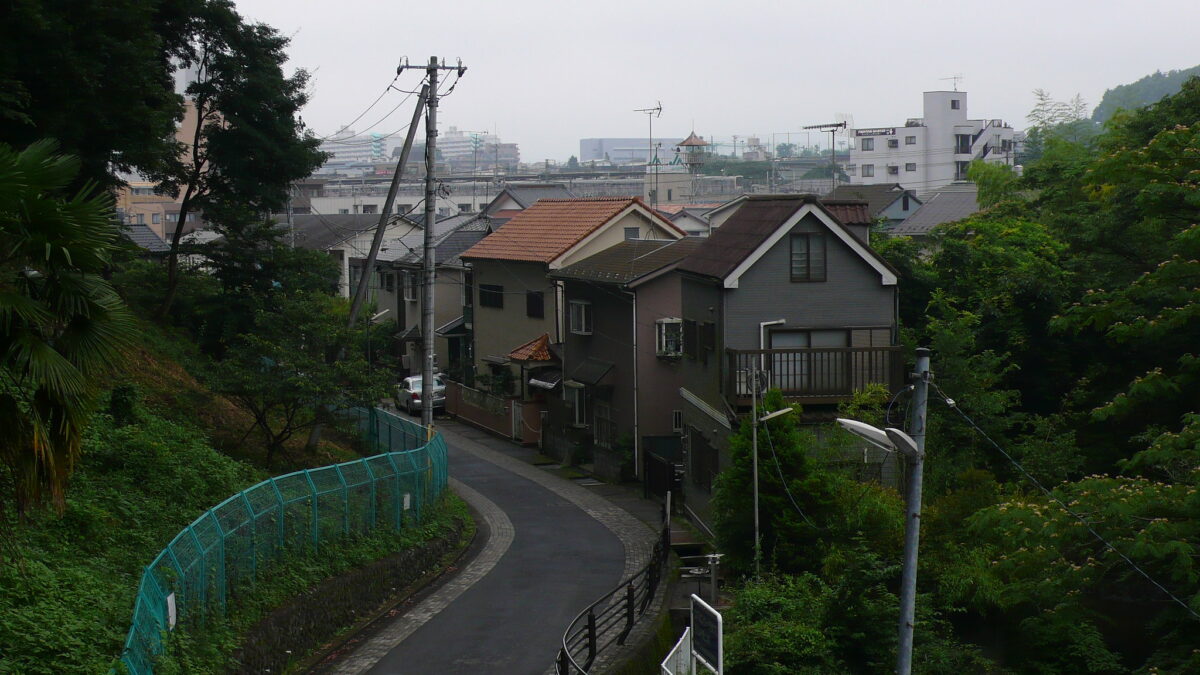
The second time I visited Tokyo, in October and November 2012, the oppressive heaviness returned, and with a vengeance. I felt unwanted, like I had hit an invisible wall. As though Tokyo didn’t appreciate my presence. And this feeling was increasingly mutual. Again it was a busy time; we were working hard to get the Still City workshop organised. Though I was conscious of the fact that I couldn’t host a workshop about Tokyo if I felt so out of place in the city, I wasn’t able to shake off my sense of alienation. After some soul searching, some making an ass out of myself, and a lot of discussion with my colleagues, I came to suspect that there were a couple of things—let’s call them first impressions (although they differed very little from prejudices)—about this city that were throwing me off balance. First there was Tokyo’s extraordinarily generic cityscape; second there was an apparent lack of urban turmoil and individual temperament; third came my impression that Japan was a country of role-playing and decorum; fourth was my estimation that Tokyo was not a cosmopolitan city; and finally it seemed to me that a large part of Tokyo’s populace was chronically exhausted. Together these impressions were somehow offensive to me. But why?
First impressions are, of course, mostly projections. You don’t actually have the knowledge to make a sensible interpretation of what you are seeing. First impressions, in short, will tell you more about yourself than the other. So why did these first impressions leave me deeply confused? What did that say about me? Was I so easily unhinged? Was there a deeper narrative that I believed about myself, one that was colliding with what I observed about Tokyo?
Once upon a time I was trained as a historian, and if someone asks about my background I’m always sure to mention my master’s degree in history. My love affair with history is as old as my capacity to read. In my free time I still read historical biographies or browse historical atlases. You can say it’s ingrained in my consciousness. I also happen to live in Amsterdam, a city where you can easily read the built environment within its historical framework.
Perhaps like many who are interested in history, my knowledge from the past generates a sense of belonging in the present. I take comfort in the idea of continuity and historical narrative. It makes me feel part of something. In Tokyo my habitual sense of belonging did not recognise anything it could hold on to, or make sense of. I realised that my uneasiness was a direct result of me being a hopeless Romantic—indeed, with a capital R.
But first some historical context, appropriately: In the 18th and 19th centuries Romanticism, an artistic and intellectual movement, was searching for more meaningful ways to connect to the natural and social environments. The Romantics were trying to make sense of a world disturbed by individualism, secularisation, the rationalisation of work and chaotic urban growth. Their emotional and intellectual search for belonging focused on genuine feelings and the raw experience of the external environment and the subjective self. In a world that was becoming more and more artificial, the Romantics were looking for the uncontaminated, in themselves and in the world.
I can relate to this. And I’m not the only one. In many ways Western cities have never been as Romantic as they are today, with our interest in authenticity, craftsmanship, honest food, fun jobs, creative hubs and pure experiences. In this sense I’m no more then a product of my time. For me old stones symbolise historical roots, while my own spontaneity provides me with a kind of rootedness in myself. Both entities provide me with a sense of belonging, anchoring me in a world based on relentless technological innovation and economic growth. For me cities are places of reinvention—technologically, socially, but most of all personally.
With my newly discovered inner lens of Romanticism, my unease in 2012 suddenly made more sense. My inner Romantic was obviously not pleased with Tokyo’s nonspecific and non-historic cityscape. I couldn’t distill any kind of narrative from the buildings. My Romantic inclination towards spontaneity, which presumed a certain unexpectedness and chaos to be part of any city, made it difficult for me to accept that Tokyo was both the biggest city in the world and the safest and cleanest. This seeming lack of mayhem, and ostensible lack of individual temperament, was not how the Romantic in me typically understood cities to work. In my mind cities were engines of creative destruction, tumultuous but virtuoso, elegant but rowdy, deeply unfair but also hopeful—places were anything could happen. Tokyo appeared to represent another kind of urbanism. Or so it seemed at least.
In short, because I couldn’t recognise anything, these first impressions left me confused about how exactly Tokyoites made sense of their city and how they felt at home within it. My confusion wasn’t helped by all the tired people I saw. I seemed to encounter them everywhere, sleeping in restaurants or in subway cars. I got the strange impression that half the town was jetlagged.

In the back of my rational head I knew that there must be an explanation. That Tokyoites must have the same love/hate relationship with their metropolis as any other urbanite. But in the moment I couldn’t see it. I could only see an outwardly perfectly organized city, inhabited by very tired people, in very generic homes. It made my presence sad and negative. I needed to snap out of it, which I eventually did.
Out of my initial confusion and unease, and out of the subsequent discussions I had with my colleagues, interest gradually emerged in the notion of “home”, and how this is structured in different cities and cultures. My unease transformed into fascination and curiosity. Discomfort faded and only questions remained: How do Tokyoites engage with their city? How do they take personal ownership and responsibility over their surroundings? How do they try to make the city work for them?
I’ve transcribed the above anecdote because it reminds me of two things. It reminds me that exploration and investigation, perhaps of any kind, are always very subjective affairs. They have as much to do with personal intuitions, inclinations and fascinations as they have to do with rationality. They are as much an art as a craft. And the anecdote also reminds me of the blind spot that most urban explorers have towards the behavioral aspects of society. Most look at the hardware of cities, but the software is just as important. Cities are governed not only by conventions, etiquettes, ideas and expectations but by buildings, infrastructure and technologies as well. Cities are foremost a gathering of people and only secondarily a heap of man-made objects. Cities are more about how people come together than about where they come together.
What I experienced in Tokyo resembles an experience I had years ago, an experience commonly known as a culture shock. As a student I lived for a while in Indonesia. I was doing research for my master’s thesis and learning the Indonesian language. My father was born in the former Dutch East Indies, present-day Indonesia, and for the first six months I lived with relatives in Malang, East Java. For the last six months I lived on my own in Jakarta. Culture shock is an interesting phenomenon because it is occurs when you are confronted with different behavioural patterns and social expectations to those you’re used to. Looking back at my attempt to internalise Indonesian language and customs, it felt like moving through a thick, unseen barrier.
Culture shock makes something that is in normal circumstances implicit and imperceptible suddenly very difficult. Culture shock has four distinct phases, whose reality I can attest to: the honeymoon phase, where you experience the differences between the old and new culture as “exotic” and alluring; the comparison phase, where the excitement eventually gives way to unpleasant feelings of frustration, loneliness and anger, as you interpret events as strange and offensive to your own attitudes and worldviews; the adjustment phase, where you grow accustomed to the new culture and develop new routines and understandings in line with it; and the bicultural phase, where you accept the cultural logic of the new place and become part of it (without shedding the old one). The whole process, if one perseveres, takes about two years.
The experience of culture shock is probably one of the most insightful experiences a person can have. It makes you aware that you are embedded in a cultural force field of shared habits, expectations, ideologies and conventions, from body language to political worldview, none of which you have ever been explicitly taught. These cultural elements are an implicit part of you. Like a fish that does not notice the water he swims in, most people are unaware of the cultural space they inhabit. They only become aware of it when they are confronted with another cultural system.
Subjective exploring is thus as much about observing the other as it is about observing yourself, because whenever you feel strongly about something—positively or negatively—there is something in that feeling that’s worth looking into. Making yourself at home inside a city is an internal process. It has to do with making sense of your new surroundings but also with adapting to them, to the cultural logic of the place you’re in. It is not an easy task. It can be full of confusion, misunderstanding, frustration and angst. But it’s definitely worthwhile.
The last time I visited Tokyo, in June 2015, this guide was almost finished. I had read all the contributions. The city, although still as mysterious as it was the first time I visited, made much more sense to me now. I felt very much at ease and comfortable in it.
On one particularly warm night I was riding the bicycle I had borrowed from a friend. During the day Tokyo can be hot and humid but the nights are pleasant. A nice breeze brushed against my body. I was on my way to have dinner with friends. Above my head an artificial firmament of slow flashing red lights stretched out. Warnings for airplanes and helicopters, so they wouldn’t fly into the skyscrapers, those dark concrete mountains that occasionally rise up above you. Tokyo felt like a dream. Interspersed within the metropolitan expanse were intimate residential areas. I was constantly cycling through barriers, from shadowy almost suburban neighbourhoods to light metropolitan high-rises. I felt myself falling in love with the city for the first time. It wasn’t love at first sight, but that doesn’t matter. Perhaps it makes the relationship even more precious.
Fijn weekend!
❤️ Ed & Chris
PS1 👓 Mocht je meer willen weten over het Still City Project en het onderzoek wat we destijds in Japan deden. Dan kan je hier de Still City Glossary (02012) [PDF] downloaden. Een eclectische verzameling invalshoeken, gedachtes, anecdotes en artikelen in de vorm van een mini-encyclopedie/glossarium.
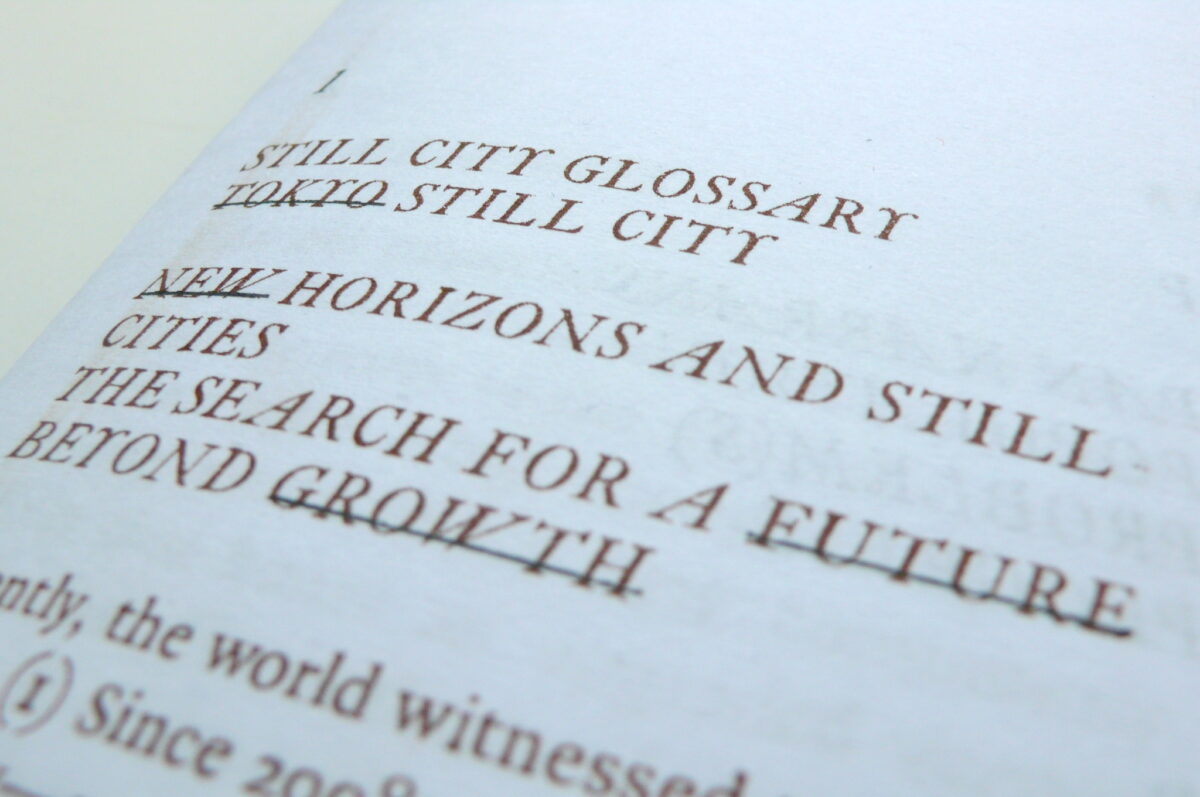
PS2 💬 We weten inmiddels wie onze gasten zullen zijn op onze eerste Architectures of Trust sessie (op maandag 7 november, 20:00, Pakhuis de Zwijger) over het publieke domein en waarheidsvinding. We zullen die avond in gesprek gaan met onder andere:
- Aiganysh Aidarbekova, onderzoeksjournalist en trainer bij Bellingcat.
- Pedro Noel, meta-journalist en oprichter van de Associated Whistleblowing Press.
- Gwenda Nielen, desinformatie expert en directeur bij Tilt en voormalig luitenant-kolonel.
Een indrukwekkende line-up, al zeggen we ‘t zelf. Wij zullen het gesprek met de deelnemers aanslingeren met een kort toekomstscenario over hoe er meer transparantie en objectiviteit in het publieke domein gebracht zou kunnen worden a.d.h. van een soort publieke chain-of-evidence.
PS3 🎓 Edwin zal vrijdag 4 november op de Impact Learning Day van de UVA wat vertellen hoe toekomstverbeelding en speculatief denken ingezet kan worden binnen een onderwijscontext.

